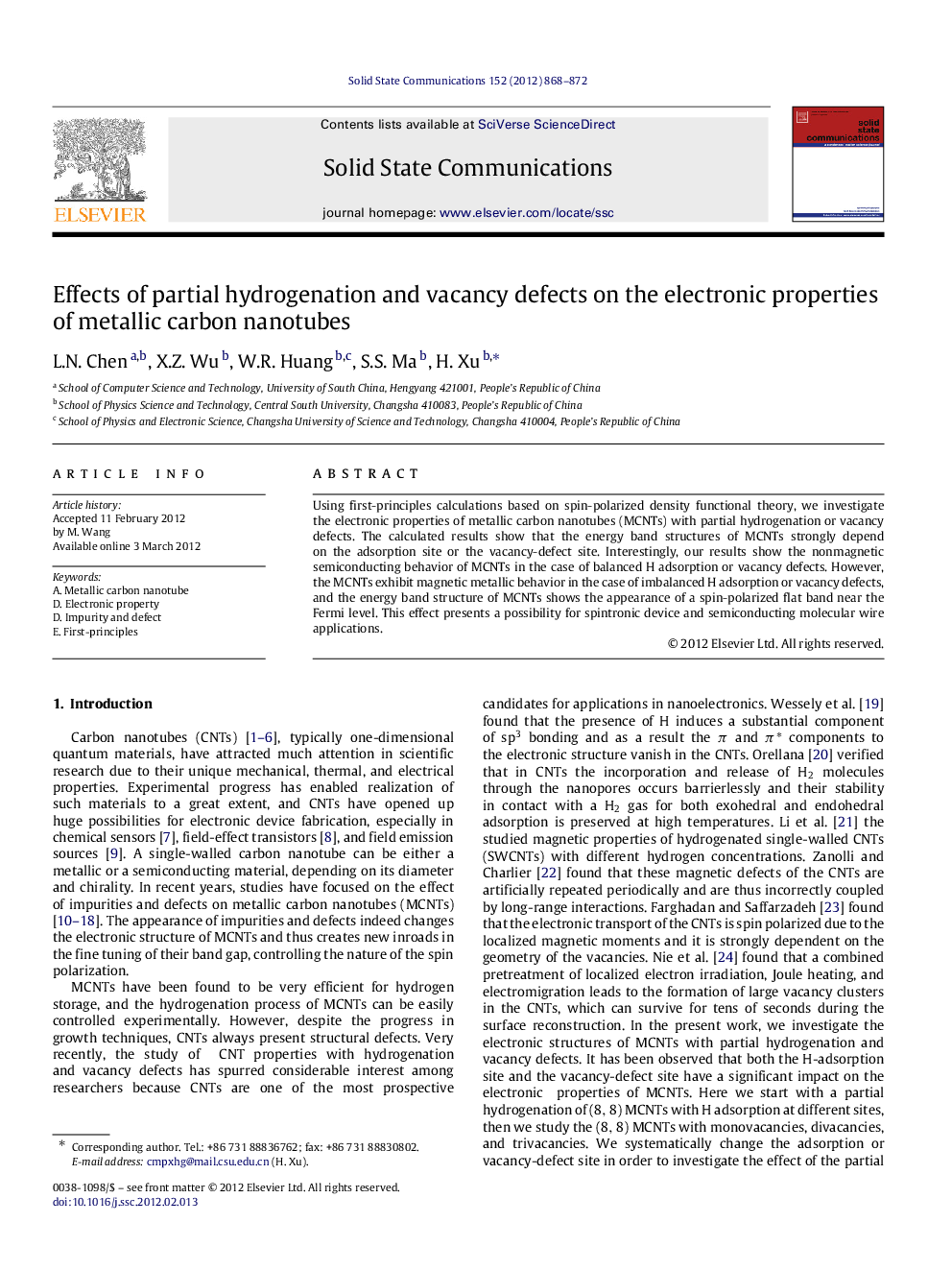| Article ID | Journal | Published Year | Pages | File Type |
|---|---|---|---|---|
| 1593367 | Solid State Communications | 2012 | 5 Pages |
Using first-principles calculations based on spin-polarized density functional theory, we investigate the electronic properties of metallic carbon nanotubes (MCNTs) with partial hydrogenation or vacancy defects. The calculated results show that the energy band structures of MCNTs strongly depend on the adsorption site or the vacancy-defect site. Interestingly, our results show the nonmagnetic semiconducting behavior of MCNTs in the case of balanced H adsorption or vacancy defects. However, the MCNTs exhibit magnetic metallic behavior in the case of imbalanced H adsorption or vacancy defects, and the energy band structure of MCNTs shows the appearance of a spin-polarized flat band near the Fermi level. This effect presents a possibility for spintronic device and semiconducting molecular wire applications.
► The electronic properties of metallic carbon nanotubes (MCNTs) can be modulated by partial hydrogenation or vacancy defects. ► The energy band structures of MCNTs strongly depend on the adsorption or the vacancy-defect site. ► The MCNTs show nonmagnetic semiconducting behavior in the case of balanced H adsorption or vacancy defects. ► The MCNTs exhibit magnetic metallic behavior in the case of the imbalanced H adsorption or vacancy defects.
